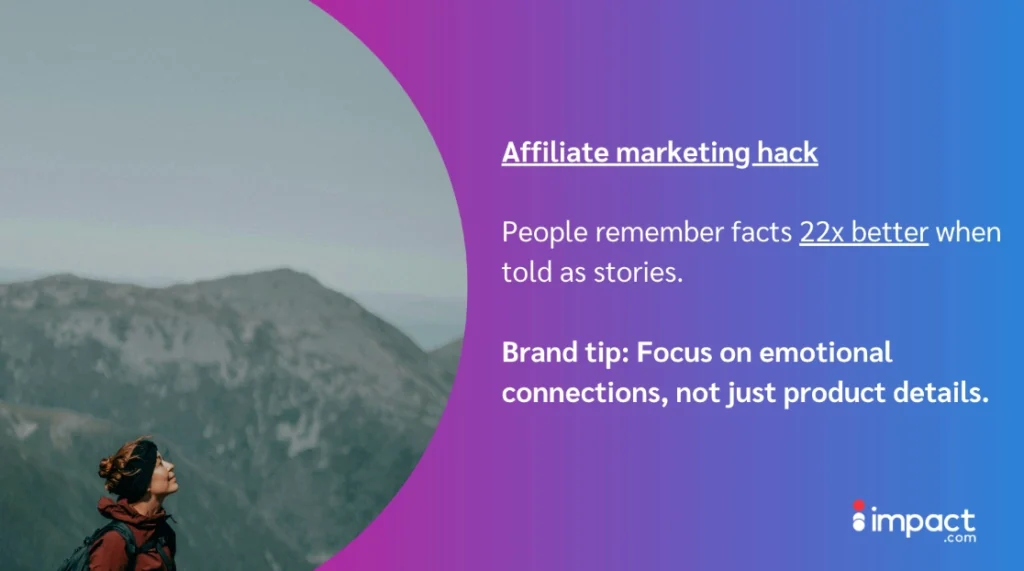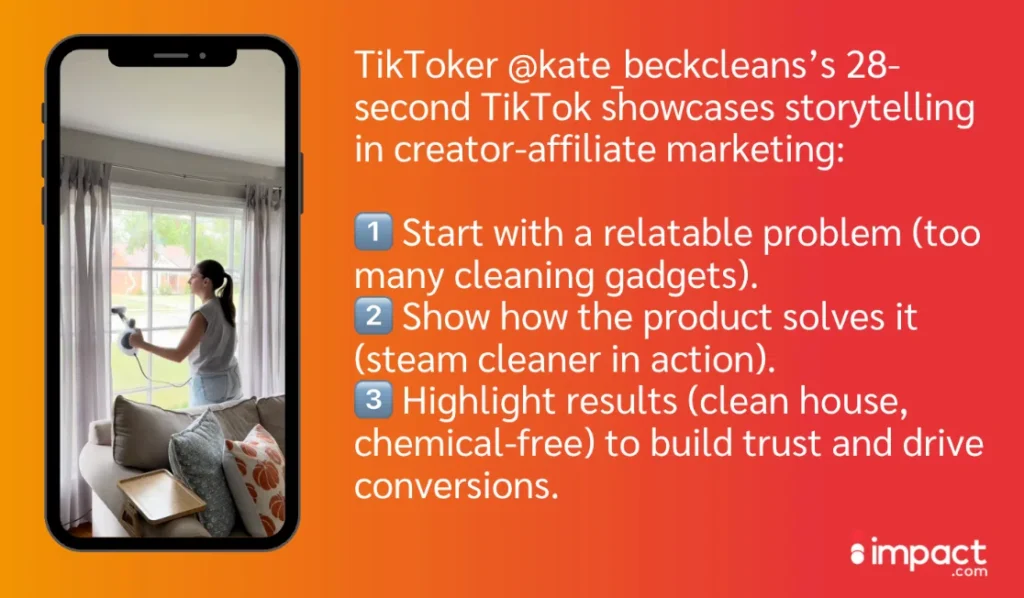When personal trainer Joe Wicks uploads a video, he isn’t just posting free fitness advice. He’s offering a masterclass in building customer loyalty. With nearly three million YouTube subscribers, “The Body Coach TV” has become a gateway to his app, creating lasting value for his audience well beyond the initial subscription.
Joe goes beyond workout tips to build a community. That’s the secret behind increasing customer lifetime value (CLV), which is critical to business because 60 percent of consumers are more loyal to brands that foster communities.
This signals a shift in creator-affiliate partnerships: They’ve gone from basic promotions into full customer life cycle support, with today’s top creators acting as trusted allies throughout the customer journey.
Success requires brands to rethink their measurement approach—tracking CLV and retention rates rather than just conversion metrics. The Joe Wicks model shows how creators can become integral to customer success, fundamentally changing how brands build lasting relationships.
In this blog, we’ll explore:
- How creators leverage storytelling to build captivating product narratives
- Strategies for fostering deeper consumer engagement throughout every stage of the customer journey
- Practical insights for brands to enhance CLV and elevate post-purchase experiences

Joe Wicks fosters strong connections with his audience by consistently focusing on health and delivering value, creating a message that truly resonates with them.
How affiliate partnerships evolved from features to storytelling
The difference between high-converting affiliate campaigns and those that fail to convert is a strong product narrative. Research backs this up: Story-driven creator content attracts 92 percent of consumers.
Narratives rarely focus on features—it’s not as effective. Cognitive psychologist Jerome Bruner suggests that people are 22 times more likely to remember facts when they’re presented as stories. For products, it’s less about listing the details and more about connecting emotionally.
In creator-affiliate marketing, narrative-led creators focus on a personal journey. It explains how and why a product solved a pain point, helping viewers visualize the benefits.
Even if conversions aren’t immediate, actions, like saves and shares, contribute significantly to other key metrics. Each share or save enhances brand awareness and fosters education, fueling the ongoing cycle of life cycle marketing.
Types of content that best support social commerce are:
- Instagram Stories and Reels
- TikTok short-form videos
- Live shopping
| Traditional affiliate marketing | Modern creator partnerships | |
| Focus | Initial conversion only | Full customer life cycle |
| Content | Feature lists, specs | Story-driven narratives |
| Relationship | One-time promotion | Ongoing partnership |
| Support | Limited to purchase | Pre to post-purchase |
| Measurement | Click-through rates | CLV and retention |
| Timeline | Campaign-based | Always-on engagement |

Affiliate marketing strategy: Day-in-the-life content feels personal and adds customer value
Marie Montano, Senior Manager of Creator Relations at impact.com, notes a shift in the value of aspirational content. It’s less about showcasing wealth and more about projecting authenticity, inviting audiences to connect through relatable and genuine storytelling.
This shift can be seen with TikTok creators like @juliabroome sharing insights from her professional journey while offering practical productivity hacks to her audience.
In one of her popular TikTok videos, Julia demonstrates how she organizes her Google Calendar to maximize efficiency and tackle tasks without unnecessary stress. The video highlights valuable features for power users, including using micro calendars as labels and color-coding them for better organization—tips that many may not have initially known.
These videos help reach customers at all life cycle stages, filling in the gaps where traditional brand marketing fails.
What sets Julia apart is her dedication to authenticity. She rigorously tests these productivity methods for weeks or even months before sharing them, ensuring they’re not just quick promotions but tools she genuinely uses.
This thoughtful approach strengthens her connection with her audience and makes her content especially impactful.

People love learning new productivity hacks, and @juliabroome is all about sharing tips and ideas to help them.
How do creators craft compelling product narratives?
Creators use a five-step storytelling framework that transforms product features into relatable experiences:
- Challenge: Identify a real problem their audience faces
- Discovery: Introduce the product as a potential solution
- Journey: Document authentic testing and real-world use
- Outcome: Show measurable results and transformation
- Community: Invite audience to join others with similar success

@kate_beckcleans on TikTok offers helpful lifestyle content to her viewers and crafts compelling product narratives through storytelling.
Let’s break down how she does it using a helpful consumer framework.
The framework: Challenge → Discovery → Journey → Outcome → Community
Kate’s TikTok video is just 28 seconds long, but it’s a perfect example of how storytelling works in creator-affiliate marketing. She provides her viewers with strong visuals and invites them to dream of how efficient their household chores can be with just one product.
Here’s how she does it:
Challenge: Kate begins her video with a problem: Too many cleaning gadgets are on the market. She uses this challenge to build tension and relatability to hold the viewers’ attention.
Discovery: Kate uses her video clips to show how she uses her steam cleaner to clean various appliances. This gives viewers new ideas on using the product, sparking the “aha” moment that tends to stick with an audience.
Journey: The journey answers, “What happened after the user tried the product?” Think of it as the messy middle, depicting real-life, relatable experiences. Kate does this by showing clips of dirty towels while she cleans.
Outcome: Kate shows the product’s result throughout her video—a clean house. She also mentions becoming a long-term product user because it is chemical-free. For viewers concerned about toxins, this information helps push them towards conversion.
Community: Kate’s account clearly shows other products that support her lifestyle and brand. Her audience trusts her opinion and sticks around for her recommendations.

@kate_beckcleans masterfully blends storytelling with practical solutions, engaging her audience with both creativity and purpose.
This framework keeps viewers engaged until the end. It leaves them imagining how different their life could be with a single addition to their cleaning closet—and that’s the power of storytelling at work.
Why does narrative-driven content convert better than feature-focused content?
Psychology is often the driving force behind marketing. When it comes to narrative-driven content, it becomes a tool for connection, retention, and conversion.
Unlike feature-focused content, affiliate content that uses stories taps into the brain’s natural inclination to process information. Suddenly, promotional content becomes more meaningful and relatable, helping to create a human connection with a brand.
Let’s explore the 4 ways that narrative-driven content comes out on top:
1. Engagement through emotion
People are more than twice as likely to remember a story compared to a list of statistics. This highlights why creators who leverage storytelling are so effective at making products memorable.
Here’s why: Stories activate brain areas responsible for emotion, memory, and empathy.
Product narratives place the viewer inside the experience, making them more likely to remember—and feel—the message.
2. Transformative appeal
Narrative-driven content focuses less on “what the product does” and more on “how it benefits your life.”
At their core, consumers want a solution to their problems, not just another trendy item.
Studies show that video content resonates most with consumers in creator-affiliate marketing. It effectively showcases a product in use. For one in three customers, creator content acts as a reminder, boosting conversions. Persuasive and aspirational, video content inspires viewers and encourages them to take action.
3. Decision-making influence
Consumers are 55 percent more likely to make a purchase a product if they love a brand’s story.
When viewers watch a story from someone they trust, they’re more likely to purchase.
Content that tells stories feels less like a hard sale and more like a recommendation from a friend.
4. Avoiding information overload
99 percent of marketers say video helps users understand how to use their product.
Stories—especially short-form video— simply convey a message.
They’re easier to digest compared to feature-driven content, reducing information overload.

Supporting customer life cycle through creator affiliate partnerships
62 percent of marketers who use videos in their campaigns say it reduces the number of support queries received. Given the power of video in affiliate marketing, creators become integral to customer success teams.
When creators post content that spans the entire life cycle, they reach customers within the same platforms where the purchases happen. Customers are less likely to submit support tickets when clear solutions are available from their favorite creators.
Here’s a deeper dive into how advocates integrate into life cycle marketing.
| How creator content supports each life cycle stage | |||
|---|---|---|---|
| Life cycle stage | Creator actions | Brand benefits | Example tactics |
| Pre-purchase | Product testing, honest reviews | Authentic validation | 30-90 day testing periods |
| During purchase | Live-shopping, Q&A sessions | Guided decision-making | Personalized discount codes |
| Post purchase | Tutorials, troubleshooting | Reduced support tickets | Unboxing videos, how-tos |
| Long-term | Community building, advanced tips | Increased retention and CLV | Private groups, exclusive content |
How affiliate marketing builds authentic product relationships before purchase
Today’s buyers want proof that a product or service lives up to the hype. And they trust creators who genuinely know the ins and outs of a product—not just those who sing its praises on launch day and never mention a product again.
Caroline Hindman, Senior Manager of Creator Services at impact.com, explains that repeated exposure to a product, particularly when paired with varied value propositions, can significantly spark consumer interest. When a discount code is introduced after they’ve already contemplated the purchase, it often becomes the decisive factor that drives them to buy.
This is why allowing creators the opportunity for deep product integration and testing periods is essential.
It’s far better for an affiliate partner to test a product for 30 or 90 days than to create a post immediately. This gives them time to:
- Learn about a product
- Form an opinion
- Troubleshoot
- Answer helpful FAQs
@MissGoElectric’s review of an e-bike is a perfect example of what happens when creators are given space to test a product.
Her TikTok post explains why she was initially concerned about purchasing this bike. Her concerns are relatable, but she clarifies doubts about the product by explaining why she’s no longer anxious about it.

@missgoelectric thoroughly tests products before sharing her reviews, providing customers with insightful and reliable feedback.
In the comments, viewers inquire about the bike’s features, and she provides honest answers to support potential buyers during the pre-purchase stage.
Additionally, she shares valuable viewer feedback with the brand, enabling them to refine their messaging, offers, and products for better alignment with customer needs.
Creator-led customer support drives purchases
Nearly two-thirds of consumers make purchases based on creator recommendations, and live shopping has emerged as a standout channel for this purpose.
These events are highly effective at building trust and engaging customers who are in the decision-making stage, making them a powerful tool for driving sales.
Brand advocates who host live shopping and Q&A sessions with products walk buyers through the purchasing stage in real time.
They provide space to:
- Allow viewers to ask questions
- Receive honest feedback
- Get recommendations that feel like they come from a friend
Research reveals the power of live shopping events in driving purchases: 73 percent of shoppers are more likely to buy after watching a live event, while 43 percent make impulse purchases during the broadcast. Given these statistics, it’s no surprise that platforms like Amazon and TikTok are prioritizing live shopping as a key feature of social commerce.
Brands that encourage their affiliate partners to host live events can offer personalized discount codes and exclusive offers. A healthy dose of FOMO—or fear of missing out— often pushes viewers into buyers.

Post-purchase creator engagement boosts product adoption and drives upsells
The customer journey doesn’t end once a customer makes a purchase. Supporting customers well after their orders arrive—with onboarding or product use ideas—helps encourage repeat purchases.
Post-purchase content also gives buyers ideas on how to get the best bang for their buck.
@Bigmommakimbo7 on TikTok captivates over one million followers on her channel. While she highlights key features, her approach leans more toward storytelling with a strong product focus.

@Bigmommakimbo7 has a deep understanding of her audience. She discovers products that simplify her life and thoughtfully shares them with her highly engaged followers.
In this TikTok post, she highlights the versatility of a multi-use grater, showcasing its ability to handle more than just cheese—perfect for slicing a variety of vegetables.
Speaking in a friendly, conversational tone, she makes viewers feel like she’s sharing a personal secret. She explains how it saves her time in the kitchen, even mentioning how she uses it to quickly slice onions for grilled burgers.
Her video gives users ideas on integrating the product in their kitchens, and one quick troubleshooting tip: how to disassemble it.
Post-purchase content extends beyond onboarding and offers tips for customers as they mature with the product.
When customers mature and move through the life cycle, it creates more opportunities for upsells, strengthening your profit margins.
How do creators build communities that drive long-term retention?
Brand advocates don’t just sell your products. They’re strategic creatives whose skills create a community around a brand.
Whether they launch their own private communities or become admins for branded groups, creators help maintain a space with long-term customer retention potential.
Here’s how:
- Private spaces like Discord and Facebook groups offer product support, exclusive updates, and genuine connection.
- Live tutorials and advanced tips keep audiences engaged after purchase, deepen product usage, and drive curiosity about future campaigns.
- User-generated content (UGC) campaigns encourage fans to share their experiences—amplifying reach and authenticity.
- Celebrating success stories makes buyers feel seen and part of something bigger.
Communities in action: Meet the Clean Beauty Crew
Saie is a clean beauty brand with an active Facebook community. Clean Beauty Crew is a space for Saie’s customers to chat about beauty products, share tips, and get skincare advice.

Building a strong community is essential for creator-affiliate content, and Saie’s Clean Beauty Crew excels at this by leveraging UGC.
While the Clean Beauty Crew is technically brand-owned, it’s powered by Saie’s ambassadors, who act more like community leaders than marketers. These moderators actively foster UGC by inviting members to share product photos, testimonials, and honest experiences, turning the group into a living archive of real-world feedback and results.
When new products drop, Saie’s loyal customers are ready and waiting to buy.
How does creator support increase customer lifetime value?
Creator-led support boosts CLV through three proven mechanisms:
- Stronger retention (reduces churn): Ongoing education keeps customers confident
- Increased product adoption (boosts usage): Advanced tutorials unlock full value
- Enhanced brand loyalty (improves repeat purchase): Trusted voices build emotional connection
Creators play a pivotal role in retention and long-term brand growth.
When used effectively, brand advocates can significantly boost customer satisfaction, loyalty, and lifetime value.
Here are three key ways they make this possible:
1. Stronger customer retention
When customers feel supported through creator-led guidance, they’re less likely to churn.
Ongoing educational content keeps users engaged and confident in their ability to use the product effectively.
2. Increased CLV
Satisfied customers are more likely to remain loyal and invest in upgrades or complementary products.
Content creators ensure customers fully understand all aspects of the product by connecting on a deeper level with the audience.
3. Enhanced trust and brand loyalty
Creators often act as trusted voices for a brand. Their involvement builds credibility and emotional connection with customers, making them more likely to stick with the product over competitors.
By leveraging creator-driven strategies, brands can provide meaningful value and ensure long-term success for both their customers and their business.
How brands can enhance the consumer post-purchase experience
The customer experience doesn’t end at checkout; it’s often where their journey with a brand truly begins.
Creators help fill the gaps where traditional marketing fails, helping build loyalty, increase engagement, and drive repeat purchases.
Here are several actionable strategies to elevate the post-purchase experience through creator collaboration.
1. What makes creator unboxing content effective for post-purchase engagement?
Unboxing videos are so popular because they’re all about discovery and excitement. Viewers get to share the joy of opening something new, which builds trust and shows off the product’s quality. Plus, the surprise factor keeps everyone hooked.
Jackeline, a beauty vlogger, shares unboxing experience videos. Whether pulling items from a bag or opening a box, she ties in storytelling techniques to give her viewers honest opinions and product details.

Unboxing videos are both entertaining and informative, offering consumers a firsthand look at product quality before purchasing.
Actionable tips for brands:
- Encourage creators to film and share detailed unboxing videos showing off the product packaging and its contents.
- Collaborate with creators to highlight unique features or personalized touches included in the packaging.
- Use these videos as an opportunity to showcase brand values, such as sustainability in packaging or thoughtful details.
2. Tutorials and how-tos
Post-purchase, customers often look for helpful guides to maximize their product use. This is where creatives are strategic partners in the customer life cycle.
They’re pros at finding unique angles to engage their audience with product tutorials. And they can engage an audience beyond straightforward talking points.
B&Q, the UK’s leading home improvement retailer, knows how to collaborate effectively with creators for engaging tutorials. In partnership with long-time collaborator Jade Sweeney, the team produced a step-by-step video showcasing how to use B&Q’s wall panelling kit. The video not only walks viewers through the process but also provides pricing details and practical tips, offering value far beyond a simple advertisement.
Actionable tips for brands:
- Partner with creators to produce video tutorials or step-by-step guides on how to use or assemble the product.
- Provide them with key talking points to ensure the brand’s messaging aligns with the content.
- Encourage creators to respond to common questions or challenges customers may face.
3. Exclusive post-purchase content
Brands can collaborate with creators to offer exclusive content that adds value for customers after the purchase.
Hinting at members-only content creates a sense of secrecy that drives customers to their shopping carts.
A fashion brand could partner with creators to offer customers—often selected based on their previous purchases—to grant them exclusive perks such as early access to new collections, flash sales, or limited-edition releases before they are available to the public.
Actionable tips for brands:
- Create “members-only” video content, such as styling tips for fashion products or recipes for kitchen tools.
- Develop downloadable content like e-books or checklists, featuring the creator’s expertise alongside the product.
- Use this added value to surprise and delight customers, reinforcing a positive brand impression.
4. Social proof through reviews
Social media is rapidly emerging as a key platform for brand research, surpassing traditional search engines like Google. Over 70 percent of Gen Z now rely on social media to evaluate brands before purchasing.
Creators become trusted voices by sharing their experiences with the product. Testimonials, before-and-afters, and real user reviews act as social proof, helping build audience trust.
But social proof does more than foster trust. With a product narrative, viewers can place themselves in the story and imagine reaping the products’ benefits. As real users share their reviews, the product narrative becomes stronger.
Actionable tips for brands:
- Collaborate with creators to share honest, detailed reviews of the product, focusing on its benefits and potential use cases.
- Feature these reviews on your website, product pages, or email campaigns as social proof.
- Encourage creators to interact with their audiences about the product, answering questions and providing personal insights.
5. Incentivize loyalty through creator-led campaigns
60 percent of millennials trust specialists who promote products in their industry. But the influence doesn’t stop there—it plays a major role in keeping customers coming back.
By aligning creator influence with post-purchase loyalty efforts, brands can deepen customer relationships and extend lifetime value.
When influencers share exclusive discounts, celebrate repeat buyers, or highlight referral perks, they turn loyalty into something customers are excited to participate in.
OLIPOP, the prebiotic soda brand, takes an always-on approach to recruiting content creators, driving higher conversions through strategic partnerships. By providing creators with personalized discount codes, the brand allows audiences to enjoy perks like free shipping and exclusive savings on recurring soda subscriptions, making it a win-win for both creators and customers.

Everyone loves a good discount, and creator-led content is an effective way to deliver it. This approach not only entices audiences, but also keeps them engaged and connected with the brand.
Actionable tips for brands:
- Partner with creators for limited-time loyalty programs, offering discount codes or exclusive offers for repeat purchases.
- Encourage creators to create content promoting refer-a-friend programs or subscription models.
- Use creator campaigns to celebrate loyal customers, such as featuring them in content or offering special shout-outs.
6. Community building
A strong brand community is built through a consistent, authentic connection. Creators are uniquely positioned to spark that connection, acting as trusted hosts and conversation starters.
By involving creators in community-building efforts, brands can create spaces where customers feel seen, supported, and inspired to share their experiences.
Actionable tips for brands:
- Collaborate with creators to host live Q&A sessions or webinars where customers can discuss the product and share their feedback.
- Encourage creators to build social media groups or forums where customers can exchange tips, advice, and experiences.
- Use these communities to gather insights and feedback for future product improvements.
7. Customer support content
When customers encounter roadblocks, creators can help bridge the gap. Their voices bring clarity, relatability, and reassurance to post-purchase education.
By turning to creators for support content, brands can reduce confusion, minimize churn, and empower customers to get the most out of their purchases.
The online learning platform GetSmarter leveraged UGC to address common user questions and showcase how the platform can help expand knowledge and even grow businesses. Many of the creators were YouTubers, producing in-depth, long-form content that inspired audiences to fully maximize their experience with GetSmarter’s courses.

Creators help customers from discovery to purchase, providing support to maximize their experience.
Actionable tips for brands:
- Partner with creators to create FAQ videos or troubleshooting guides for your product.
- Use creator testimonials or tips to address common customer pain points in a relatable way.
- Share this content on your website or social platforms to make it easily accessible.
FAQs
Creators are a powerful force in driving conversions by transforming products into relatable, engaging stories that truly resonate with audiences. Their authentic and compelling content supports every stage of the customer lifecycle, from sparking initial discovery and interest to nurturing deeper engagement that leads to repeat purchases.
By showcasing products in real-life scenarios, creators build trust with their audiences, making brands feel more accessible and genuine. This trust not only encourages initial purchases but also fosters long-term loyalty, reducing churn and maximizing customer lifetime value. In an increasingly competitive market, creators play a key role in bridging the gap between brands and consumers, turning casual viewers into lifelong customers.
Authenticity is the foundation of trust. When creators genuinely use and recommend a product, it resonates with their audience on a deeper level. Consumers are increasingly savvy and can spot inauthenticity a mile away, which makes genuine endorsements all the more powerful. Real experiences create a strong emotional connection, driving higher engagement, improving brand recall, and ultimately leading to better conversions. An authentic recommendation feels personal and relatable, fostering loyalty not just to the creator, but to the brand as well.
Social commerce revolutionizes the way creators connect with audiences by seamlessly integrating storytelling with commerce functionality. With features like in-app shopping, live events, and shoppable videos, it allows for seamless in-platform purchasing experiences, turning content into powerful conversion tools. This approach not only shortens the path from inspiration to checkout but also enhances community building and customer lifecycle management, boosting trust, engagement, and revenue along the way.
Effective affiliate customer retention tactics focus on building long-term value. This includes offering exclusive discounts or early access to new products for customers acquired through affiliates, providing exceptional post-purchase support, and nurturing a community around your brand. Regularly communicating with these customers through personalized emails or loyalty programs can significantly boost repeat purchases and customer lifetime value.
Traditional affiliate programs typically reward affiliates for the initial sale or lead generation. In contrast, full-journey affiliate partnerships involve creators throughout the entire customer lifecycle, from initial awareness and consideration to purchase and even post-purchase engagement. These partnerships often include compensation for ongoing brand advocacy, content creation across multiple touchpoints, and driving repeat business, fostering deeper collaboration and sustained growth.
Creators should ideally test products long enough to genuinely understand their features, benefits, and potential drawbacks. For most products, a testing period of two to four weeks allows for sufficient personal experience and authentic feedback. This ensures the creator can confidently and credibly promote the product, enhancing trust with their audience and driving more effective conversions for your creator affiliate campaigns.
The ROI from creator affiliate partnerships can vary significantly but often delivers strong returns due to authentic audience connection and performance-based compensation. Brands can expect to see increased brand awareness, higher conversion rates, and improved customer acquisition costs compared to traditional advertising. Successful partnerships often yield an impressive ROI, with top-performing campaigns reaching much greater profitability through sustained sales and brand advocacy.
Measuring post-purchase creator engagement involves tracking metrics beyond the initial sale to understand ongoing influence. This includes monitoring social media mentions and shares of customer-generated content inspired by the creator, analyzing repeat purchase rates from creator-attributed customers, and tracking participation in loyalty programs or community forums. Tools that link customer behavior back to the originating creator can provide valuable insights into their long-term impact and the overall effectiveness of your affiliate marketing strategy.
Affiliate marketing adds lasting customer value through genuine creator content
Creator-affiliate marketing isn’t just about quick sales anymore. To truly grow, brands need to team up with creators who can connect with customers at every step of their journey.
When creators share authentic stories and build communities, they turn casual interest into lasting loyalty.
Here’s how your brand can make it happen:
Tell stories, not just features: Forget product lists. Encourage creators to share personal stories about how your product solves problems and makes life better. People remember stories 22 times more than facts.
Keep it real: Let creators genuinely use and love your product before they talk about it. This authenticity builds serious trust with audiences.
Support customers post purchase: The customer journey doesn’t end at checkout. Creators can be your secret weapon for post-purchase support by sharing unboxing videos, helpful tutorials, exclusive content, and honest reviews. This keeps customers happy and coming back.
Embrace social commerce: Make it easy for customers to buy directly from creator content. Shoppable videos and live events are game-changers, turning engagement into sales right on the platform.
By focusing on genuine relationships and long-term value with creators, your brand can build a loyal community that sticks around for the long haul.
Check out our latest content to learn more:
- How content creators are reshaping the affiliate marketing model [blog]
- Scaling influencer marketing campaigns globally [ebook]
- Driving affiliate success through talent, strategy, and stronger partnerships [podcast]
- The rise of the performance creator: The future of marketing partnerships | iPX 2025 [webinar]
- Creator economy vs influencer marketing: Why smart brands are making the switch in 2025 [blog]






